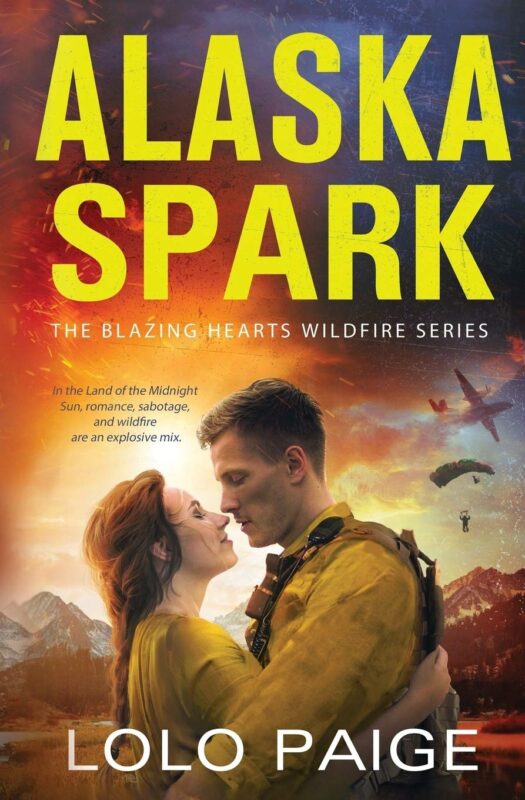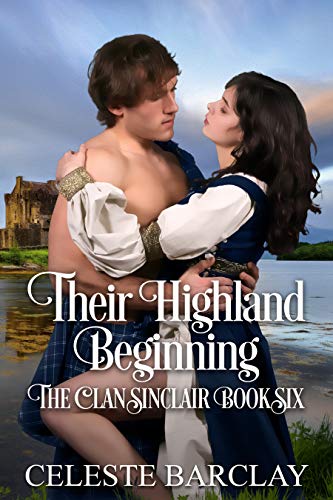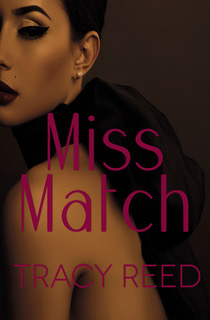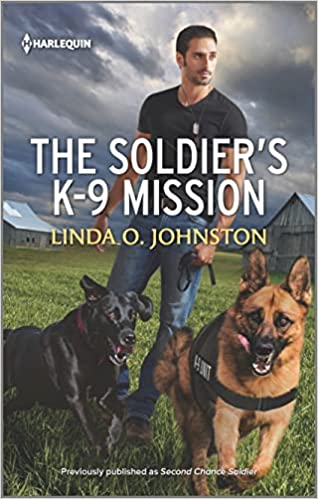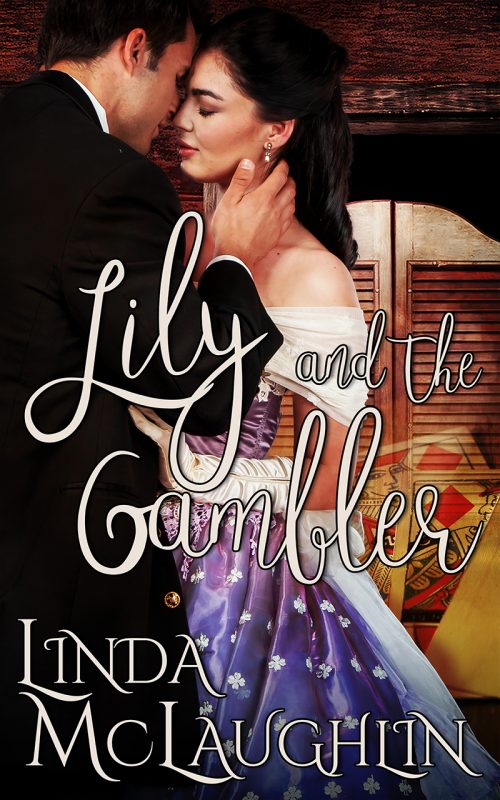Cooking with Words
August 19, 2018 by Jenny Jensen in category On writing . . . by Jenny Jensen tagged as cooking, language, words, writing

Words are a writer’s ingredients. We love words – obscure words, descriptive or emotional words, those sets that make up the language of a specialty. Creating a passage of the perfect words hits the poetic, emotional and dramatic sweet spot — it’s more satisfying than a perfectly risen soufflé. Those words are not always based on literal meaning; otherwise Oscar Wilde would never have written: “The curves of your lips rewrite history.”
I have always been taken with the vocabulary of cooking. This is probably because I can’t cook. Maybe I think if I learn that vocabulary I can wield it like an incantation and my split pea soup will magically look less frightening, smell inviting and even taste good. It hasn’t worked but culinary terms, as a set of words, continue to surprise me — they’re just so aggressive.
Macerate, whip, beat, truss, pulverize, grind, batter, beat, scald. Whoa! All this to get something beautiful, delicious and nutritious? It works for most cooks. No matter how I slice or dice, shred, mince or mash, it seldom works for me. Must be in how you understand the terms and in nuance of use. Culinary terms work just as well to describe a cage fight as they do with a recipe for Angel Food cake.
Jared didn’t blanch facing the mountain that was Killdeer Kilze. He’d whip this fight up – he had to – the kids hadn’t eaten in two days. Time to mince this guy and reduce his essence. Zest infused Jared’s system, juicing his blood as he minced the mountain’s nose with one lethal chop, shred his kneecap with another. Scalded by the roar of the drunken crowd he beat at the massive chest, macerating the ribs. Sliced, diced and filleted to perfection, Killdeer Kilze lay trussed like the appetizer he was. The kids would dine well tonight.
Cooking is a gentle, homey pursuit – though some of those chef shows can be down right bloody so maybe it’s the competitive aspect that accounts for the aggressive feel. These words aren’t really homonyms. They sound alike and are spelled alike but they don’t have different meanings. The difference is in the sense of the meaning.
Linguists and other learned folk call this fine distinction, Polysemy. It’s the distinction that good writers always make. It’s part of why poetry can rock your world. Seeking just the right words with just the right nuance can make a love scene monumental rather than simply sweet, or enfold the reader in the sight, smell and sound of a setting. It’s the choice and use of the right words that makes a story linger in the reader’s heart — something every writer wants.
I do wonder how our language developed to make this particular set of words work for such opposing concepts. Is there a conflicted warrior inside every woman? I don’t know but if I dig far enough I’m sure theories abound. And while I ponder this conundrum I do it…again. I fritter my time away on obscure concepts and my carefully mixed cornbread hits the cooling rack and bounces. It sounds like a hollow rock. Clearly, it takes more than knowing the right language to make a great cook. But it is knowing the right nuanced words that makes a great book.
Jenny
3 0 Read more
GIFTS by Jenny Jensen
July 19, 2018 by Jenny Jensen in category On writing . . . by Jenny Jensen tagged as reading, stories
petlady.com
GIFTS
Now and again I’ll read a book where the author’s voice is so compelling, their world building so powerful it’s like an alien abduction, a zombie infusion, a body snatching. I’ll catch myself channeling that author—at least for a time. So right now I am firmly in the mad, irreverent, outlandishly silly yet uplifting world of Carpet Diem (Jason Lee Anderson). I’ve been sucked into the Neil Gaiman vortex of crazed angels and demons and us poor mortals made to dance to their warped tune.
I live in the Rio Grand river valley. We’re crosshatched with acequias, the irrigation canals that bring river water to the surrounding fields. Every morning I walk my dog early — best to beat the heat — along the canal banks. We take the same route each day because there is whole action packed world there and I like to keep up with events.
Come spring the Rio Grande is let to run in the canals and the wildlife — being very smart wildlife — flock to it. The canal banks are covered in the ubiquitous NM dust, which is fine and dry and holds tracks beautifully. There are always signs of skunks, raccoons, pheasants and ducks, the occasional stray dog, muskrats and snakes. The large, imperious bullfrog doesn’t leave any tracks but I sometimes hear his throaty voice and once I saw him sitting above the culvert surveying his grounds. He’s huge and handsome and his head is the most brilliant emerald green. Definitely a King.
In May newly wed mallards showed up and made their nest in King’s culvert. I did my best to keep Lizzy from their nesting spot and it mostly worked, but you know how boarder collies are — very bossy and she insists on letting this pair know she knows they’re there. Reg and Sybil Mallard have learned to ignore Miss Lizzy. I knew we’d see ducklings eventually but I began to despair of that when it became clear a while ago that a skunk had chosen that spot for a den. Guess it’s prime real estate but I can’t imagine the Mallard’s laying their eggs next to a skunk, never mind the telltale aroma.
This morning I see seven ducklings emerge from the culvert’s edge to waddle self-consciously up onto the road. I grabbed Lizzy’s collar before she could give chase and the sound startled the fuzzy adolescents. They paused for a second, flapping their untried wings like flustered church ladies clasping their pearls, then made a bee line across the road and back down to the water. At my feet I see the tracks of two raccoons circling the trail of a muskrat and the patter of tiny skunk feet weaving in and out among them. The pencil like trail of a snake circles all that frantic motion and the distinct webbed feet of the mallard’s tracks the parameter. Standing back I see the paw prints of an inordinately large dog pacing to and fro. Clearly there was some raucous action last night.
I am puzzled. Since when does a bullfrog share territory with a skunk, not to mention a skunk is not a duck’s natural neighbor? Raccoons do not ordinarily do-si-do with muskrats, snakes or skunks and what kind of dog has paws that big? With the voice of that story still singing in my head I suddenly understand. King bullfrog is the enchanted form of that legendary singer no one has sighted for years. The rest is obvious.
Reg and Sybil are angels (or demons; it’s sometimes hard to tell in the genre-bending universe of Gaiman-esque world building) sent to protect the King’s divine pearl guitar pic. The skunk is their warrior, the muskrat and snake their scouts, the raccoons are the troops none can sneak past. The big dog (wolf?) is an unscrupulous but soundly thwarted thief. The pic must remain where it is or every impersonator would fail and the legend would die. Some things must remain sacred.
Lizzy and I go home, satisfied that all can be made right with the world. It’s like a spell. Every good book gifts the reader a great escape, and some give the gift that keeps on giving — for a while at least.
0 0 Read moreREAD LIKE A WRITER, EDIT LIKE A SURGEON
June 18, 2018 by Jenny Jensen in category On writing . . . by Jenny Jensen tagged as editing, reading, writing
READ LIKE A WRITER, EDIT LIKE A SURGEON
It isn’t a novel yet. First draft is complete, now the next step – the self edit. Shiver! It’s a herculean chore to turn a critical eye on a manuscript you’ve labored over so long and lovingly, but you know it’s imperative. You’ve got standards; you know you have to meet those standards before you turn your work over to the scrutiny of fresh eyes — editor or beta reader. You’ve lived with your story a long time. You know every character, each plot twist, every setting and every detail of conflict. Now you have to see the whole forest, not just each single tree.
The most common advice is to step away for a bit and let go. A week, a month, however long so the words to are new to you. I agree completely. The longest I’ve let work set is one year. On re-reading the manuscript, face flushing, teeth grinding at the lame ending, I placed it firmly in the back of my file cabinet. And I didn’t look back. I’m either a coward or I used the writer side of my reader’s brain to realize and accept all 92K words as well-intentioned practice. It was a good exercise, something to hone my skills. That’s my story and I’m stickin’ to it.
I don’t think there’s a book written that when read with a writer’s eye, doesn’t contain lessons. You have an ear for good writing – you’re a reader after all, so when you self-edit consider what you’ve learned to turn a laser eye on your own work. What is it that made a story grip and hold you? If the book bored you, why? Those stories that delighted you contain elements of craft you want to see in your own work. Those bad books contain pitfalls to avoid.
For me the not so good books hold the most obvious lessons. The tedious information dump, more information than the reader needs to know — makes you wish for some lively dialog to impart the stuff we do need to know. Setting descriptions so detailed you wonder if the book wasn’t produced by a Chamber of Commerce. Scenes, no matter how well written, that add nothing to the story. Dialog tags that tell us what emotions to feel. The dialog itself should do that. Repeated phrases, worm words, and worst of all, unlikeable characters we are meant to root for. I have to be shown a reason to care.
Every full-length novel you’ve loved has a voice pleasing enough to live with for a period of time — some books you just don’t want to end. The sentences flow smoothly, details are salted through out so they support the rise of the story arc. Settings come to life in way that makes place a solid, necessary character. If the plot is confusing at some point that confusion is cleared as the story unfolds – it’s that compelling voice that keeps us reading. There’s no unnecessary fat. The characters grow and develop in the course of their journey and while we might not always like them, we’re intrigued enough we must know what happens.
Read like a writer. Consider what makes a good story good and then use those characteristics like a scalpel when you sit down to your self-edit. Be unmerciful. You’ll thank yourself later.
Criticism: Big Girl Panties for Ruth by Jenny Jensen
May 25, 2018 by Jenny Jensen in category On writing . . . by Jenny Jensen tagged as constructive criticism, critiques, Editors, Jenny Jensen, writers
Criticism: Big Girl Panties for Ruth
Or How to Take It on the Chin and Grow
I attended an author’s chat the other day at our local library. It’s always fun to hear an author talk about their craft— especially if you like their books. The bonus is mingling with other attendees. Who among us doesn’t enjoy chatting with fellow book lovers? I found myself in conversation with two women, each funny, gracious and interesting. When talk got to the inevitable “so what do you do?” I learned Kit was a nurse and Ruth, a writer. I added that I’m an editor and while Kit smiled acknowledgment, Ruth scowled.
Ten minutes later—after Kit had smiled apologetically and bowed out—I’d learned all about Ruth’s experience with editors. “They call themselves editors, but they’re really just critics. They couldn’t even follow the story, let alone the subtext. They’re just mean, simple-minded wannabe writers” and so forth. Yowza! I’d never encountered that before. I know a lot of editors, and none of them fit that bill. Best to just nod and try to look sympathetic while keeping an eye peeled for a graceful escape. Ruth had either met the world’s worst editors, or she’s simply unable to handle criticism. I suspect the latter.
Writing is hard, solitary work. It’s just you creating in a vacuum. Writing requires hours of reading, writing and revising, searching for just the right words to make a character live and breathe, the perfect plot twist, the right feel. Writing writing writing, and then hours of revision. The whole blood, sweat and tears combo. Then there’s the criticism; every writer has to face it if they want to share their work outside that creative vacuum.
It can be a hard pill to swallow. I know. I’ve been singed by some very savvy, very critical edits. Hard to have your heart and soul — not to mention all that BS&T—picked to pieces by others. But like mammograms, taxes and dirty diapers, it has to be faced.
As an editor, I’m really loath to offer a ‘critique’. That word has such baggage. If words have color, then criticism is a red-tinged pulsating mash-up of bruised blue and black. I prefer to think of what I do as editorial assessment, or an overview. (Words really are powerful, aren’t they?!) But no matter how I spin it, it comes down to criticism.
Criticism is like cholesterol; there’s the good kind and the bad kind. The LDL kind, the bad kind, is empty criticism. “ I don’t like it”, “Flimsy and transparent” or “I don’t get it”. My favorite being, “yeah, I read it. Interesting”. Ouch! Then there is the polite, painless approach: “Very nice!” What could that possibly mean?
Constructive criticism is HDL cholesterol, good for every writer’s circulation. Good criticism points out pitfalls and weaknesses, but it also explains why they are pitfalls and weaknesses. It sheds light on why it doesn’t work. Really good, healthy criticism offers solutions. I never expect an author to accept a solution I offer (and most don’t, they find their own). I offer it as a straw man—something to consider, breakdown, reject and replace with a better approach because suggesting a substitute shows the author the problem needing a solution. It’s because a writer creates in isolation that they can’t always hear a misstep. I’m guessing Ruth’s missed subtext was so sub it wasn’t there. Point this out to a writer and the light bulb goes on; they revise, and the story is stronger.
How should you, as a writer, react to criticism? You wrote it, you shared it—you must learn to account for it. How do your words strike people? Did the reader see nothing where you intended a scene to be revealing or suggestive, and so the story is confusing? You can’t dismiss the reader as thick, dense or stupid. You have to look at your words and consider improvement because clearly, those words didn’t do the job you had intended. Whether it’s a missed plot point or character motivation that can’t be seen, maybe it isn’t on the page; it’s still in your head. Revise, rewrite. Listen to the audience your words are intended for. The best writers respect their readers. Your work will only get better.
A good editing critique helps you identify weaknesses. Don’t take it personally. Constructive criticism is useful precisely because it isn’t personal. Your BFF is unwilling to risk a response that might be hurtful, but is that what a writer needs?
Writing’s about kicking doubt in the ass and shoving him out the door. Editing’s about inviting him back in for tea and scrutiny. *
I wish Ruth had invited her editor back in.
*from @novelicious, that magical twitter feed that is double chocolate for every writer’s sweet tooth.
0 0 Read moreThe Mighty Pen vs The Purposeful Keyboard by Jenny Jensen
April 19, 2018 by Jenny Jensen in category On writing . . . by Jenny Jensen tagged as creativity, handwriting, writing

When was the last time you wrote anything in longhand? Jotting a note, shopping and to-do lists don’t count.
Since writing, no matter what tool we use, is the expression of ideas does the tool you use affect those ideas? If you write out your novel in longhand would the creative process be the same as if you’d clicked it out on a keyboard? Would it be the same story?
Reams have been written (by hand or keyboard?) about the cognitive difference between the two methods. I’ve read articles by neuroscientists who point out the different mental skills each requires; a keyboard is automatic once you’ve learned where each key is and that makes it fast enough to capture a word the second it pops to mind, while handwriting is linked to the creative part of the brain, problem solving and critical thinking. And it takes a bit more time, time for your brain to make more sense of those rapid-fire thoughts. But there’s no denying the ease of the keyboard.
Cursive isn’t taught in schools much anymore so it’s pretty clear we favor the keyboard over pen and paper. Cursive handwriting, where the pen is not raised between characters, has been replaced with learning to use a qwerty keyboard. Are there advanced classes covering the various methods of texting — thumbs versus one-fingered hunt and peck? I could do with that.
A friend of mine died recently. It wasn’t quick or unexpected. I sat down to my keyboard and in 15 minutes clicked out a letter to her husband. There was a lot I wanted to say in as few words as possible and I hoped the words would bring him some comfort. It wasn’t right at all. By the third draft I realized the words might as well have come from Miss Mourning’s Official Book of Sympathy Letters. My words felt clinical. That’s when I took up pen and paper.
I don’t know if it was the weight of the pen in my hand, the feel of the paper or the sight of the words mirroring my thoughts as they appeared beneath my hand. Maybe it was the time the act of writing allowed me to consider before the thoughts appeared as words, but the first handwritten attempt was exactly right. The words were genuine and personal and I knew they would touch my friend’s husband in a good way.
There have been thousands of wonderful writers since the advent of the typewriter — the first keyboard. It’s obvious that the method hasn’t harmed creativity. I do wonder if the works of Louisa May Alcott or Dickens would have been different if they’d had Microsoft Word. (I suspect they’d have loved it for the revisions alone.) Of course there are those contemporary authors like Joyce Carol Oates, who only write in longhand. George R.R. Martin is another. He must have developed Olympian hand muscles by now. The pen trumps the keyboard for some mighty talented writers.
I’m sharing these wandering thoughts because I did learn a lesson with that letter. If you find yourself stuck over a scene, uncertain where to take a plot or floundering over some critical dialog, take up pencil and paper and write it out by hand. There’s a more direct, more personal connection to heart and mind that may well help the right words flow – provided you’ve been taught cursive.
2 0 Read moreAffiliate Links
A Slice of Orange is an affiliate with some of the booksellers listed on this website, including Barnes & Nobel, Books A Million, iBooks, Kobo, and Smashwords. This means A Slice of Orange may earn a small advertising fee from sales made through the links used on this website. There are reminders of these affiliate links on the pages for individual books.
Search A Slice of Orange
Find a Column
Archives
Featured Books
MISS MATCH
What happens when the matchmaker inadvertently gets matched while matching someone else?
More info →Newsletter
Contributing Authors
Search A Slice of Orange
Find a Column
Archives
Authors in the Bookstore
- A. E. Decker
- A. J. Scudiere
- A.J. Sidransky
- Abby Collette
- Alanna Lucus
- Albert Marrin
- Alice Duncan
- Alina K. Field
- Alison Green Myers
- Andi Lawrencovna
- Andrew C Raiford
- Angela Pryce
- Aviva Vaughn
- Barbara Ankrum
- Bethlehem Writers Group, LLC
- Carol L. Wright
- Celeste Barclay
- Christina Alexandra
- Christopher D. Ochs
- Claire Davon
- Claire Naden
- Courtnee Turner Hoyle
- Courtney Annicchiarico
- D. Lieber
- Daniel V. Meier Jr.
- Debra Dixon
- Debra H. Goldstein
- Debra Holland
- Dee Ann Palmer
- Denise M. Colby
- Diane Benefiel
- Diane Sismour
- Dianna Sinovic
- DT Krippene
- E.B. Dawson
- Emilie Dallaire
- Emily Brightwell
- Emily PW Murphy
- Fae Rowen
- Faith L. Justice
- Frances Amati
- Geralyn Corcillo
- Glynnis Campbell
- Greg Jolley
- H. O. Charles
- Jaclyn Roché
- Jacqueline Diamond
- Janet Lynn and Will Zeilinger
- Jaya Mehta
- Jeff Baird
- Jenna Barwin
- Jenne Kern
- Jennifer D. Bokal
- Jennifer Lyon
- Jerome W. McFadden
- Jill Piscitello
- Jina Bacarr
- Jo A. Hiestand
- Jodi Bogert
- Jolina Petersheim
- Jonathan Maberry
- Joy Allyson
- Judy Duarte
- Justin Murphy
- Justine Davis
- Kat Martin
- Kidd Wadsworth
- Kitty Bucholtz
- Kristy Tate
- Larry Deibert
- Larry Hamilton
- Laura Drake
- Laurie Stevens
- Leslie Knowles
- Li-Ying Lundquist
- Linda Carroll-Bradd
- Linda Lappin
- Linda McLaughlin
- Linda O. Johnston
- Lisa Preston
- Lolo Paige
- Loran Holt
- Lynette M. Burrows
- Lyssa Kay Adams
- Madeline Ash
- Margarita Engle
- Marguerite Quantaine
- Marianne H. Donley
- Mary Castillo
- Maureen Klovers
- Megan Haskell
- Melanie Waterbury
- Melisa Rivero
- Melissa Chambers
- Melodie Winawer
- Meriam Wilhelm
- Mikel J. Wilson
- Mindy Neff
- Monica McCabe
- Nancy Brashear
- Neetu Malik
- Nikki Prince
- Once Upon Anthologies
- Paula Gail Benson
- Penny Reid
- Peter Barbour
- Priscilla Oliveras
- R. H. Kohno
- Rachel Hailey
- Ralph Hieb
- Ramcy Diek
- Ransom Stephens
- Rebecca Forster
- Renae Wrich
- Roxy Matthews
- Ryder Hunte Clancy
- Sally Paradysz
- Sheila Colón-Bagley
- Simone de Muñoz
- Sophie Barnes
- Susan Kaye Quinn
- Susan Lynn Meyer
- Susan Squires
- T. D. Fox
- Tara C. Allred
- Tara Lain
- Tari Lynn Jewett
- Terri Osburn
- Tracy Reed
- Vera Jane Cook
- Vicki Crum
- Writing Something Romantic
Affiliate Links
A Slice of Orange is an affiliate with some of the booksellers listed on this website, including Barnes & Nobel, Books A Million, iBooks, Kobo, and Smashwords. This means A Slice of Orange may earn a small advertising fee from sales made through the links used on this website. There are reminders of these affiliate links on the pages for individual books.

